For Drivers
Below are accident examples based on the Direct Compensation for Property Damage Regulation (DCPD).
DCPD was introduced as part of the Automobile Insurance Reforms announced in October 2020. DCPD replaced the property damage portion of the third-party liability coverage on a driver’s auto insurance policy effective January 1, 2022.
The main intent of this change is to provide Alberta drivers with an efficient way to process vehicle damage claims.
If a driver is in an accident, they will work directly with their insurance company instead of the third-party’s insurance company. This allows for a more efficient and customer-focused claims process. DCPD is part of the mandatory coverage for Alberta drivers.
DCPD changes who pays, not what is paid for.
The accident examples below explain who is at fault.
These accidents occur when vehicle A is struck from the rear by vehicle B while both vehicles are travelling in the same direction and the same lane. There are three scenarios to consider:
1. If vehicle A stops or is moving forward, the driver of vehicle A is not at fault for the accident. The driver of vehicle B is 100 per cent at fault for the accident. 
2. If vehicle A turns right or left to enter a side road, private road, or driveway, the driver of vehicle A is not at fault for the accident. The driver of vehicle B is 100 per cent at fault for the accident. 
3. If vehicle A enters a parking place on the right or left side of a highway moving forward, the driver of vehicle A is not at fault for the accident. The driver of vehicle B is 100 per cent at fault for the accident. 
These accidents occur when vehicles A and B collide while both are travelling on a highway in the same direction, beside each other, and neither vehicle overtakes nor passes the other. There are three scenarios to consider:
1. If neither vehicles A nor B are changing lanes when the accident occurs, and both vehicles are on or over the centre line, then the driver of each vehicle is 50 per cent at fault for the accident. 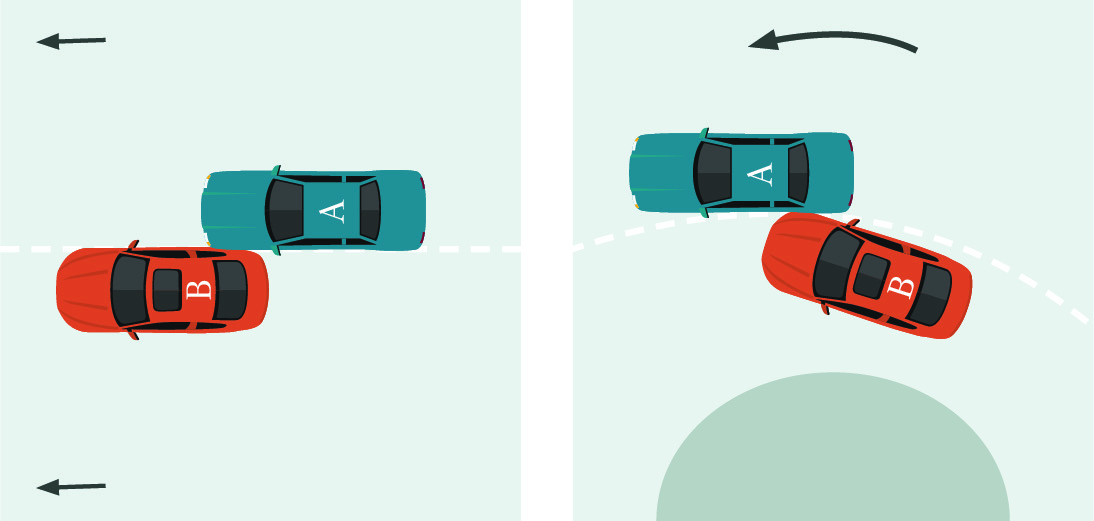
2. If the accident location cannot be determined, the driver of each vehicle is 50 per cent at fault for the accident.

3. If vehicle B changes lanes when the accident occurs, the driver of vehicle A is not at fault for the accident. The driver of vehicle B is 100 per cent at fault for the accident. 
In Alberta, the minimum requirement for insurance is $200,000 for third-party liability and accident benefits coverage. Over 98% of vehicles are insured for at least a $1,000,000 limit of third-party liability.
An accident occurs when vehicles A and B collide while travelling on a highway in adjacent lanes and vehicle A overtakes or passes vehicle B. There are three scenarios where this can occur:
1. If vehicle A is turning left at an intersection and vehicle B is overtaking or passing vehicle A, the driver of vehicle A is not at fault for the accident. The driver of vehicle B is 100% at fault for the accident. 
2. If vehicle A is turning left to enter a parking place, private road, or driveway and vehicle B is overtaking or passing vehicle A, the driver of vehicle A is 75% at fault for the accident, and the driver of vehicle B is 25% at fault for the accident.
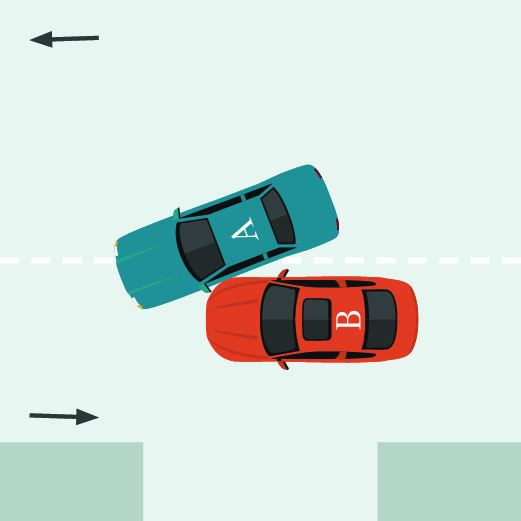
3. If vehicle A is turning left to enter a parking place, private road, or driveway and vehicle B is overtaking or passing one or more vehicles stopped behind vehicle A, the driver of vehicle A is not at fault for the accident, and the driver of vehicle B is 100% at fault for the accident. 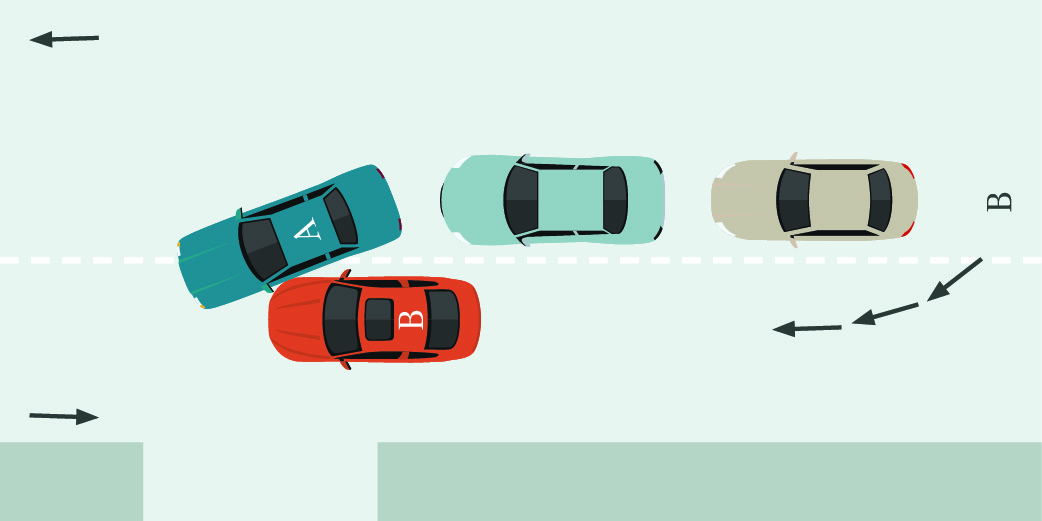
An accident occurs when vehicles A and B collide while travelling in opposite directions and adjacent lanes. There are five scenarios to consider:
1. If neither vehicles A nor B are changing lanes, and both vehicles are on or over the centre line when the accident occurs, the driver of each vehicle is 50% at fault for the accident. 
2. If the location of where the accident occurred cannot be determined, the driver of each vehicle is 50% at fault for the accident.
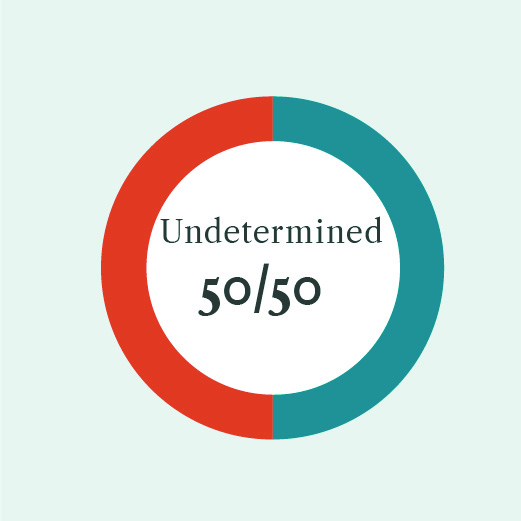
3. If only vehicle B is over the centre line when the accident occurs, the driver of vehicle A is not at fault for the accident, and the driver of vehicle B is 100% at fault for the accident.
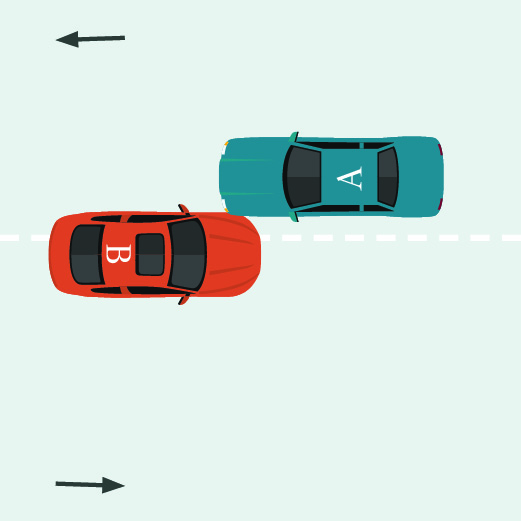
4. If vehicle B turns left into the path of vehicle A, the driver of vehicle A is not at fault for the accident, and the driver of vehicle B is 100% at fault for the accident. 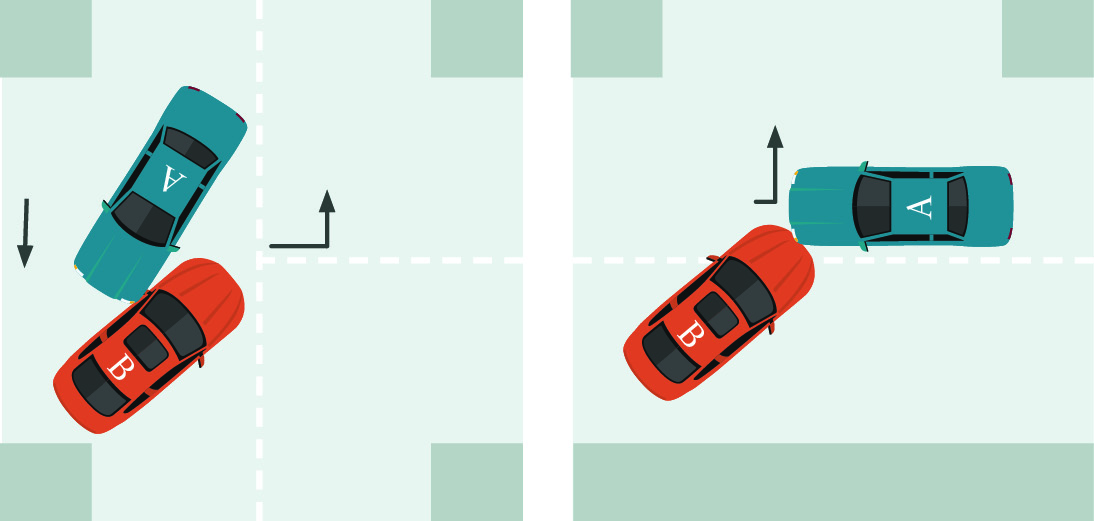
5. If vehicle B is entering the highway from a parking place or private road or driveway and vehicle A is overtaking or passing another vehicle, the driver of vehicle A is not at fault for the accident, and the driver of vehicle B is 100% at fault for the accident.
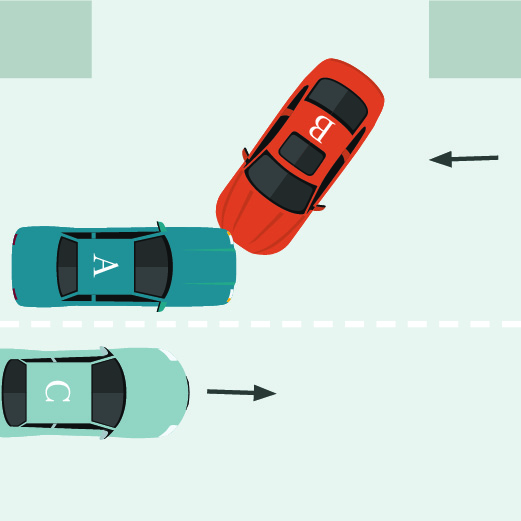
An accident occurs where vehicles A and B collide while vehicle A is travelling on a highway and vehicle B is entering the highway from a parking place, private road, or driveway. There are two scenarios to consider:
1. If vehicle B is entering the highway from a parking place and vehicle A is travelling past the parking place on the highway, the driver of vehicle A is not at fault for the accident. The driver of vehicle B is 100% at fault for the accident. 
2. If vehicle B is entering the highway from a private road or a driveway, and vehicle A is travelling past the private road or driveway on the highway where there are no traffic signs at the intersection, the driver of vehicle A is not at fault for the accident. The driver of vehicle B is 100% at fault for the accident.
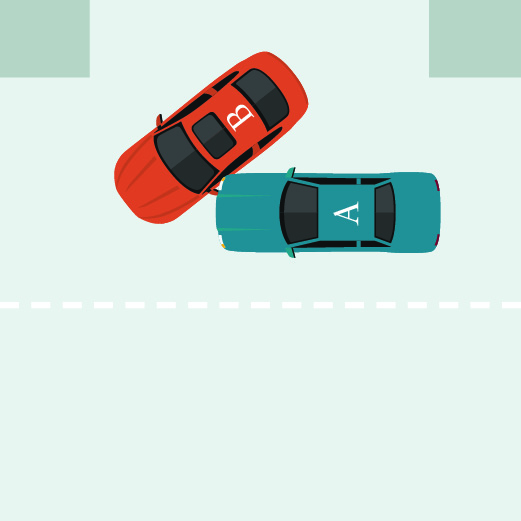
Vehicles A and B collide while vehicle A is travelling on a controlled highway and vehicle B enters the controlled highway from an entrance lane.
In this scenario, the driver of vehicle A is not at fault for the accident. The driver of vehicle B is 100% at fault for the accident. 
These accidents happen when one or more vehicles are stopped or slowing down, and the back vehicle is struck from behind, leading it to strike the vehicle in front as a result.
The degree of fault for each accident between two vehicles involved in a chain reaction must be determined without reference to any other accidents in the chain reaction.
There are two scenarios to consider:
1. If all vehicles involved in a chain reaction accident are travelling on a highway and in forward motion when the accident occurs:
(a) With respect to the accident between vehicles A and B, where vehicle A is the first vehicle and vehicle B is the second vehicle, neither driver is at fault, and
(b) With respect to the accident between vehicles B and C, where vehicle B is the second vehicle and vehicle C is the third vehicle, the driver of vehicle C is 100% at fault.
2. If all vehicles involved in a chain reaction accident, except vehicle C, are stopped when the accident occurs:
(a) With respect to the accident between vehicles A and B, where vehicle A is the first vehicle and vehicle B is the second vehicle, neither driver is at fault, and
(b) With respect to the accident between vehicles B and C, where vehicle B is the second vehicle and vehicle C is the third vehicle, the driver of vehicle B is not at fault and the driver of vehicle C is 100% at fault.
In this diagram, vehicles A and B are stopped or slowing down when vehicle B is rear-ended by vehicle C. Vehicle B is then pushed forward and rear-ends vehicle A. Drivers must be far enough behind another vehicle to be able to stop safely, even in an emergency. Therefore, the driver of vehicle C would be 100% at fault. 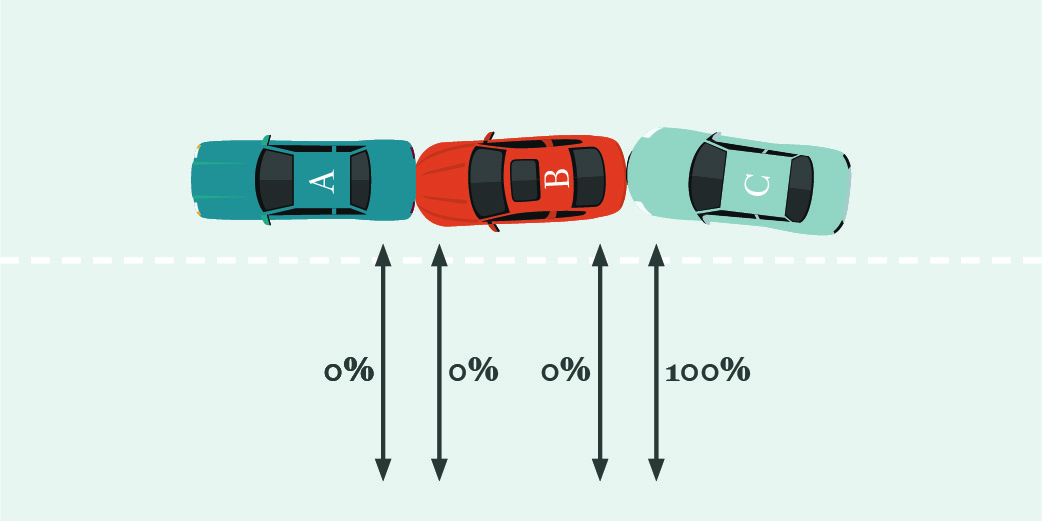
If there are multiple vehicles involved in a pile-up, for each accident between two vehicles involved in a pile-up, the driver of each vehicle is 50% at fault. 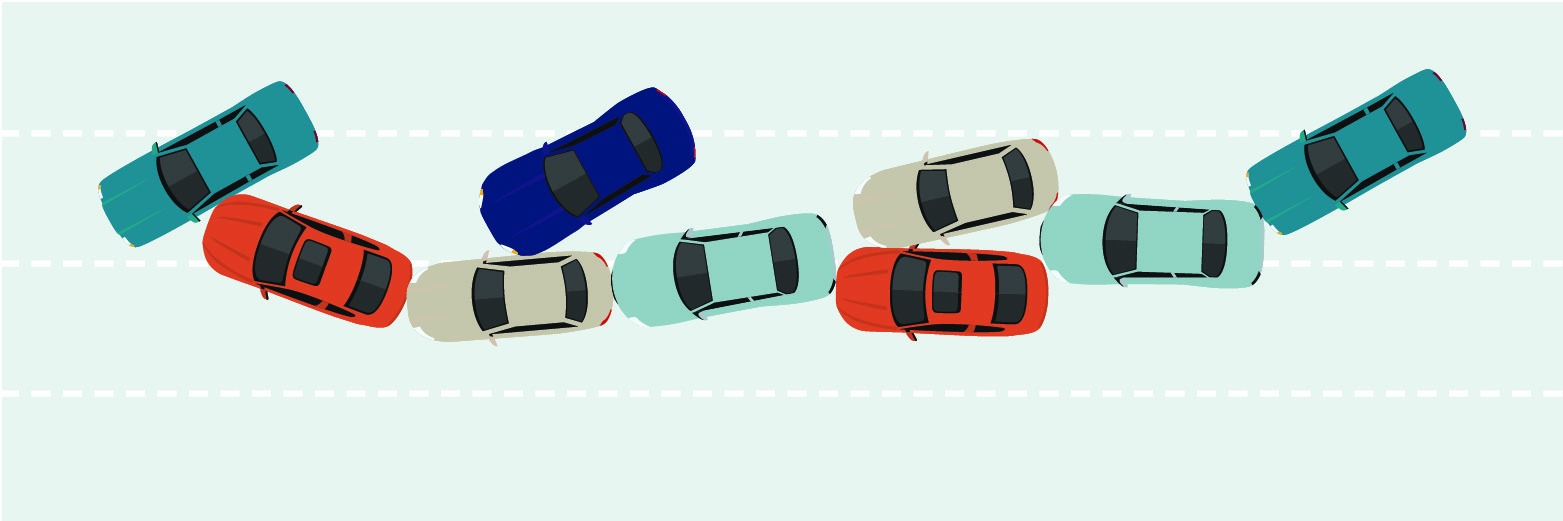
An accident at an uncontrolled intersection (one without traffic signs or traffic control signs) occurs when a vehicle is driving through the intersection and collides with an approaching vehicle who has failed to yield. There are three scenarios to consider:
1. If vehicle A enters the uncontrolled intersection before vehicle B the driver of vehicle A is not at fault for the accident, and the driver of vehicle B is 100% at fault for the accident.

2. If both vehicles A and B enter the intersection simultaneously, and vehicle A is on the right of vehicle B in the intersection, the driver of vehicle A is not at fault for the accident. The driver of vehicle B is 100% at fault for the accident.
3. If it cannot be determined whether vehicle A or B entered the intersection first, the driver of each vehicle is 50% at fault for the accident.
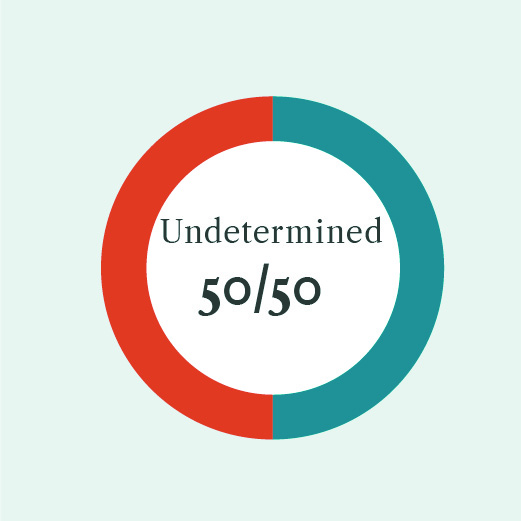
An accident occurs when vehicles A and B collide at a controlled intersection (one with traffic signs or traffic control signs). There are six scenarios to consider:
1. If the driver of vehicle B fails to obey a traffic sign, the driver of vehicle A is not at fault for the accident, and the driver of vehicle B is 100% at fault for the accident.
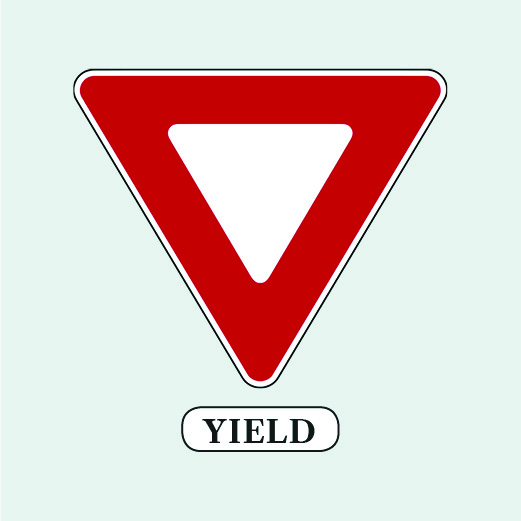
2. If the drivers of vehicles A and B both fail to obey a stop sign, the driver of each vehicle is 50% at fault for the accident.
3. If it cannot be determined whether the drivers of vehicle A, B, or both, failed to obey a stop sign when the accident occurred, the driver of each vehicle is 50% at fault for the accident.

4. If vehicle A stops first at an all-way stop intersection, the driver of vehicle A is not at fault for the accident, and the driver of vehicle B is 100% at fault for the accident.
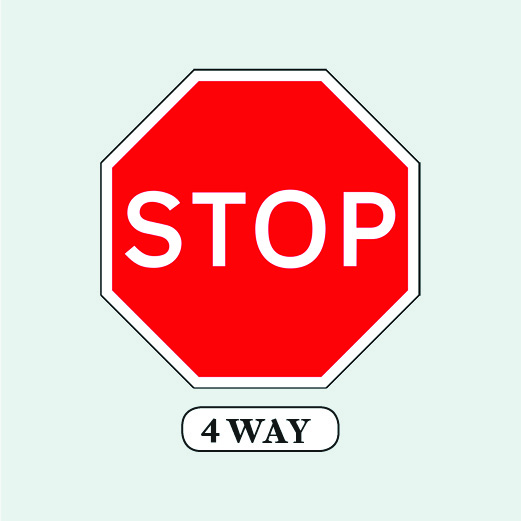
5. If both vehicles A and B arrive simultaneously at an intersection with an all-way stop sign, and vehicle A is stopped to the right of vehicle B, the driver of vehicle A is not at fault for the accident, and the driver of vehicle B is 100% at fault for the accident.
6. If it cannot be determined whether vehicle A or B arrived first at an intersection with an all-way stop sign, the driver of each vehicle is 50% at fault for the accident.
An accident occurs when vehicles A and B collide in an intersection with traffic control signals. There are three scenarios to consider:
1. If the driver of vehicle B fails to obey a traffic control signal, the driver of vehicle A is not at fault for the accident, and the driver of vehicle B is 100% at fault for the accident.

2. If it cannot be determined whether the driver of vehicle A or B failed to obey a traffic control signal when the accident occurred, the driver of each vehicle is 50% at fault for the accident.
3. If the traffic control signals at an intersection are inoperative or malfunctioning, the degree to which each driver is at fault for the accident must be determined as if the intersection was an intersection with an all-way stop sign.
The fault for an accident occurring on a thoroughfare, like a parking lot, must be determined as if the thoroughfare were a highway. There are three scenarios to consider:
1. If the accident occurs when vehicle A is travelling on a thoroughfare, and vehicle B enters the thoroughfare from a feeder lane and fails to yield the right of way to vehicle A, the driver of vehicle A is not at fault for the accident. The driver of vehicle B is 100% at fault for the accident.
2. If the accident occurs when vehicle A is travelling on a thoroughfare or feeder lane, and vehicle B is entering the thoroughfare or feeder lane from a parking space and fails to yield the right of way to vehicle A, the driver of vehicle A is not at fault for the accident. The driver of vehicle B is 100% at fault for the accident.
3. If the accident occurs in an intersection in a parking lot with a traffic sign, the degree to which each driver is at fault must be determined following the section on intersections with traffic control signals. Without a traffic sign, the degree to which each driver is at fault must be determined following the section on intersections with traffic signs if it cannot be determined whether the roads are thoroughfares or feeder lanes.
1. If vehicle B collides with vehicle A while vehicle A is parked, the driver of vehicle A is not at fault for the accident. The driver of vehicle B is 100% at fault for the accident.
2. If vehicle A is illegally parked, stopped, or standing when the accident occurs and the accident occurs outside of an urban area, the driver of vehicle A is 100% at fault for the accident. The driver of vehicle B is not at fault for the accident.
Note: If the striking/moving vehicle is uninsured or unknown (hit and run), DCPD does not apply, and the parked vehicle can claim through their own all perils or comprehensive coverage if they have purchased the coverage.
If vehicles A and B collide when the driver of vehicle B fails to obey a direction given by a peace officer or a sign prohibiting entry, overtaking, passing, or turning, the driver of vehicle A is not at fault for the accident. The driver of vehicle B is 100% at fault for the accident.
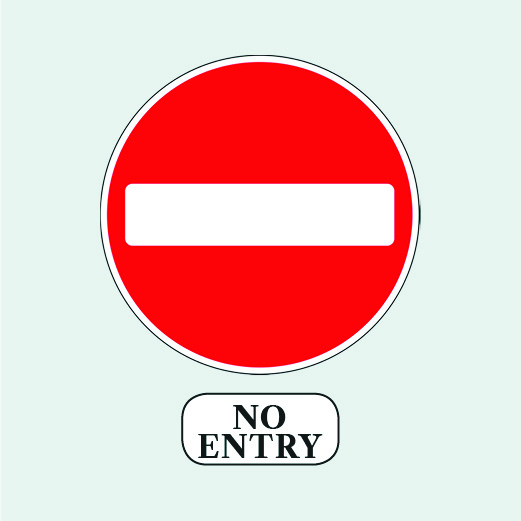
If vehicles A and B collide while vehicle B is backing up or making a U-turn, the driver of vehicle A is not at fault for the accident. The driver of vehicle B is 100% at fault for the accident.

There are two scenarios to consider:
1. If vehicle A collides with vehicle B when the driver or passenger in vehicle B opens the vehicle door or leaves the vehicle door open, the driver of vehicle A is not at fault for the accident. The driver of vehicle B is 100% at fault for the accident.
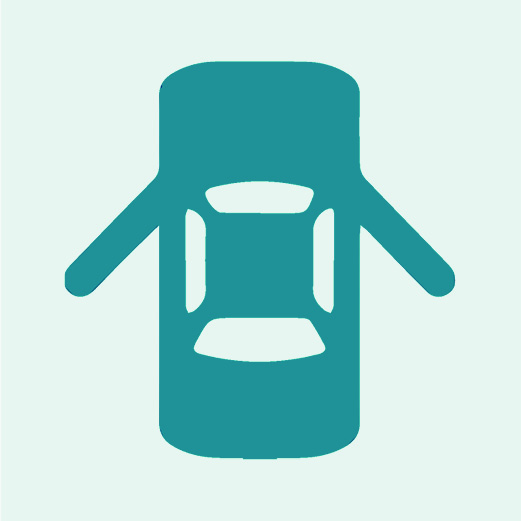
2. If vehicle A collides with vehicle B when the driver or passenger in vehicle B opens the vehicle door or leaves the vehicle door open in a manner which is reasonably safe and does not constitute a hazard to moving traffic, the driver of vehicle A is 100% at fault for the accident. The driver of vehicle B is not at fault for the accident.